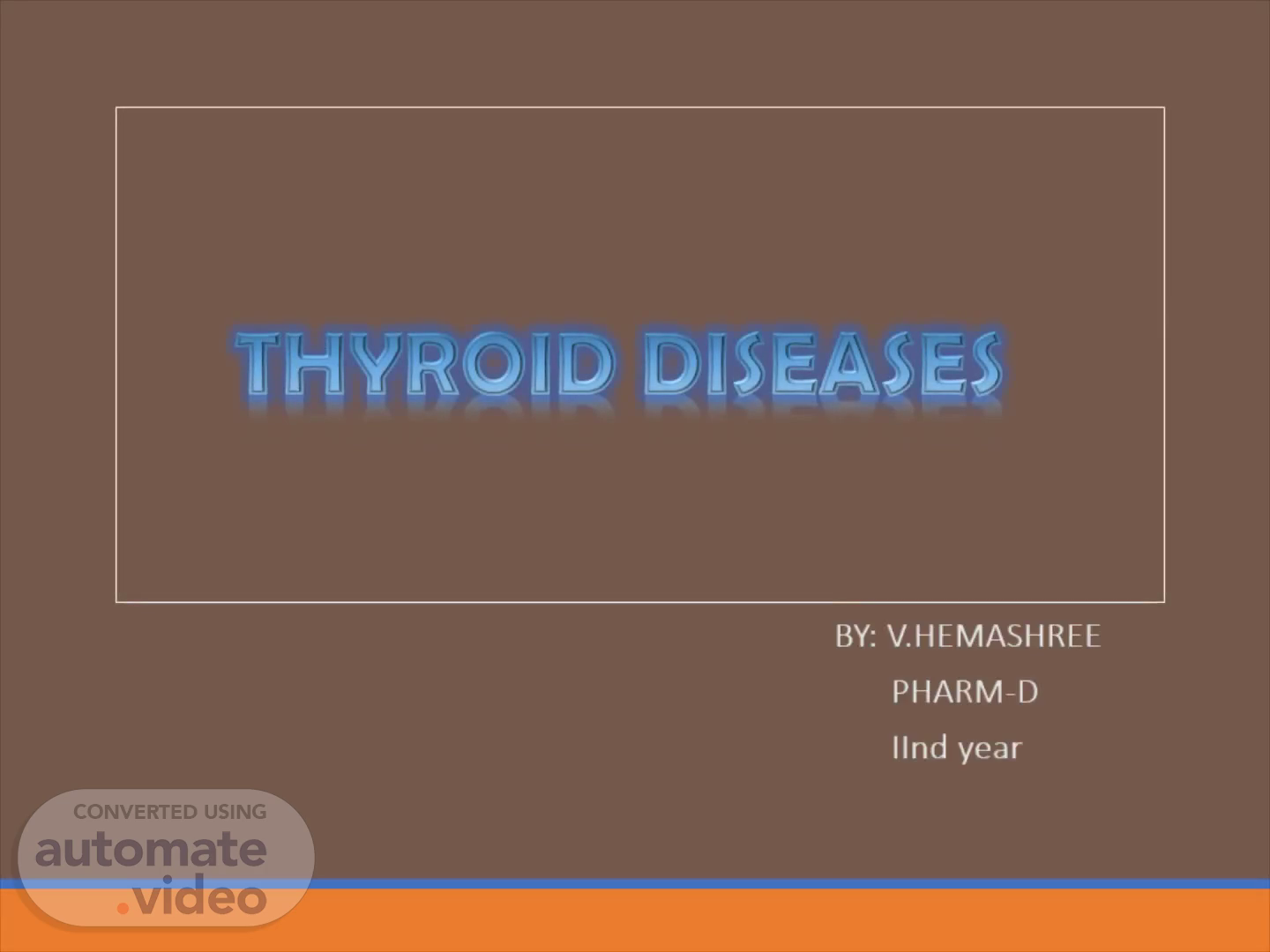Scene 1 (0s)
THYROID DISEASES. BY: V.HEMASHREE PHARM-D IInd year.
Scene 2 (7s)
INTRODUCTION Largest endocrine gland. Located inferior to cricoid cartilage. Butterfly shaped organ comprising of two lobes - lobus dexter(right) - lobus sinister(left) Weighs 18-60gms in adults. Histologically it is made up of follicular and parafollicular cells..
Scene 3 (20s)
Blood supply Arterial supply - superior thyroid artery - inferior thyroid artery Venous supply - superior thyroid vein - inferior thyroid vein Nerve supply - Superior laryngeal nerve Recurrent laryngeal nerve Lymphatic drainage - Lateral deep cervical lymph node - Pretracheal/para tracheal lymph nodes.
Scene 6 (43s)
Physiology Hypothalamus Thyroid releasing hormone(TRH) Pituatary Thyroid stimulating hormone(TSH) Thyroid gland (target site) Tyrosine(target hormone) MIT/DIT.
Scene 7 (50s)
Regulation of T 3 and and other stressors Secre t i on S ti tory ibitory portal systern Anterior pituitary Thyroid gland TSH and in target tissues: roetab01isrn • Increase body ternperature Increase norrna' oro•wtt• and devoloprnent.
Scene 8 (1m 0s)
THYROID DISORDERS • GRAVE'S DISEASE • THYROID STORM HYPERTHYROIDISM • TOXIC THYROID NODULE • HASHIMOTOS THYROIDITIS • CRETINISM • MYXOEDEMA HYPOTHYROIDISM • POSTPARTUM THYROIDITIS • SUBACUTE THYROIDITIS • SICK EUTHYROIDISM.
Scene 10 (1m 15s)
THYROTOXICOSIS Hypermetabolic clinical syndrome resulting from serum elevation of thyroid hormone levels(T3 & T4). Causes are GRAVE' S disease, multinodular goitre and toxic adenoma. GRAVE'S DISEASE is the most common form..
